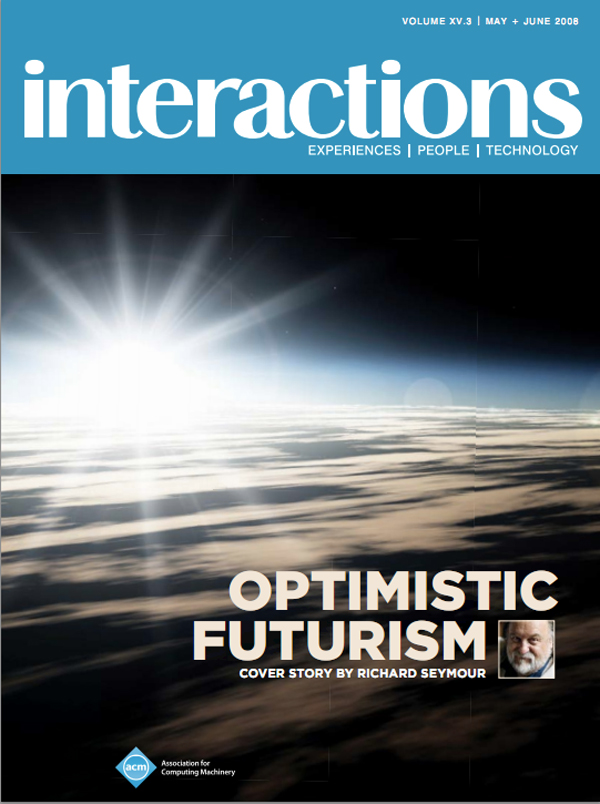Authors:
Richard Anderson, Jon Kolko
One of the most exciting developments for the "interactions disciplines"is the coming together of different worlds and the uniting of alternative visions for a larger, more productive, and more enriching whole. We have seen this potential achieved internally among interaction design communities, as, for example, ethnography becomes more formally intertwined with design and design more formally integrated with engineering. Now we are starting to see this externally, as interaction becomes more appropriately integrated into other creative disciplines, into business, and into the new business models that will shape the 21st and 22nd centuries.
Both of us have for a long time counted many architects among our interaction design friends. Thus, one of the most interesting, and perhaps overdue, examples of worlds increasingly colliding is the traditional and articulate world of architecture with the emerging world of interaction design. The shaping of buildings is considered by many to be a truly noble art, and the Platonic notion of architecture as productive and painting as imitative has been repeated and retaught in schools of art and design since. Yet numerous liberally minded architects have attempted to integrate issues of flow, behavior, and time into their designs: The roots of progressive participatory design techniques can be found in the discipline of architecture, as can the obvious connection between wayfinding and information architecture.
In this issue community editor Dave Cronin introduces us to Benjamin Bratton, a unique combination of sociologist and design strategist. Benjamin describes the notion of "program": the place where interaction design and architecture come together, and where designers affect behavior on a gross level that intertwines deeply with the heart of a city or town.
Dave Cronin also offers his own writing on another noble art, one rich with interaction connections. Dave describes the world of music as filled with deep, meaningful, and complicated interactions and makes parallels between the time-based methods of crafting sound and the time-based methods of producing digital interactions. As he investigates some of the historical precedents of music making, one can't help but see a new renaissance emerging. When viewed in light of Benjamin's take on program, we can see that the two authors are beginning to paint a picture of a world in which interaction is not constrained to a website or software application, but instead touches on the fabric of our culture and our world.
Our cover story by Richard Seymour could then be seen as the call to action to make this new renaissance shift an imperative. Seymour describes, in a brilliantly ironic manner, the shift necessary to make the future beautiful and enriching. His work truly is a view of a new world, and when seen in light of his progressive work toward consumer space travel, we can see this new renaissance of worlds colliding.
This issue likely marks a challenging perspective for practitioners of interaction disciplines, as it paints a picture of what is to come and raises a fairly explicit and demanding challenge. To quote Seymour, "It's no longer down to what we can doit's about what we should do." We hope practitioners will acknowledge this challenge and consider it in light of the collision of worlds. The challenges are great, but the opportunities are greater.
Richard Anderson and Jon Kolko
[email protected]
DOI: http://doi.acm.org/10.1145/1353782.1353783
©2008 ACM 1072-5220/08/0500 $5.00
Permission to make digital or hard copies of all or part of this work for personal or classroom use is granted without fee provided that copies are not made or distributed for profit or commercial advantage and that copies bear this notice and the full citation on the first page. To copy otherwise, to republish, to post on servers or to redistribute to lists, requires prior specific permission and/or a fee.
The Digital Library is published by the Association for Computing Machinery. Copyright © 2008 ACM, Inc.








Post Comment
No Comments Found